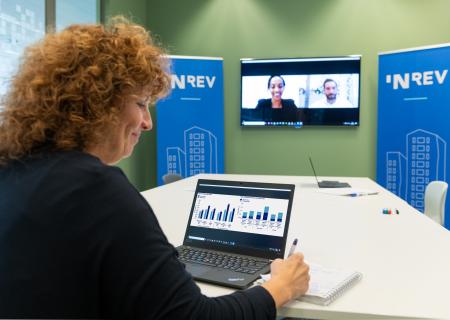Impact investing in real estate
Ready to take wing
ESG issues have been high on the real estate agenda for number of years now, recognising that it has a big role to play in a number of areas such as energy transition and social wellbeing. Acknowledging that real estate can have a positive impact on the world, attention has recently turned to the potential of impact investing for real estate, even if the concept has not always been well understood. This article aims to clarify the idea of impact investing and explore its potential role for non listed real estate.
INREV's Global Definitions database defines impact investments as investments made with the intention to generate positive, measurable social and/or environmental impact alongside a financial return.
This means that before investing you must intend to have a positive impact and define what sort of impact this will be. One such impact could be to focus on investing in affordable housing in markets where this is lacking. The impact also needs to be measurable. So in the context of energy transition, for example, lost CO2 emissions could be measured. It is also important to understand that impact investing is not the same as philanthropic investing – there must be a financial return.
The Global Definitions database of INREV defines impact investments as investments made with the intention to generate positive, measurable social and/or environmental impact alongside a financial return
According to the latest Global Impact Investing Network (GIIN ) report on the size of the impact investing market, around USD 715 billion is invested in impact investments globally. Of this, less than 5% is likely to have been invested in real estate funds. Most real estate impact funds have so far been focused on the United States with European initiatives limited in number. The latter have mainly targeted on affordable housing or the healthcare sector.
However, interest in impact investing is gradually increasing and looks set to be the next step for a number of investors and fund managers. Institutional real estate investors are coming to realise that boosting the ESG profile of their investments could lead to more stable returns in the long run. In addition, pension funds increasingly understand that their fiduciary duty does not stop at providing a monetary pension, since this can only be enjoyed in a sustainable environment.
Institutional real estate investors are coming to realise that boosting the ESG profile of their investments could lead to more stable returns in the long run
Real estate has the potential to play a substantial role in impact investing. One starting point could be the Sustainable Development Goals, 17 global targets that the United Nations aims to reach by 2030. These can help investors select their impact investing themes as they give a wide-ranging view of the current challenges faced by society.
Each investor could have a different focus area of theses SDGs. For example, MN focusses for real estate on Goal 11, which aims to make cities and other settlements inclusive, safe, resilient and sustainable. One of the sub-goals is to provide adequate and affordable housing. According to the UN’s Principles for Responsible Investment, around 1.6 billion people are housed inadequately. A specific problem in the Netherlands is the lack of affordable housing for those whose income is just above the threshold for eligibility but still cannot find housing to meets their needs, an area that impact investing is starting to address. Investing in this kind of housing will not only benefit potential occupiers but also those represented by investing institutions, who will gain a more sustainable environment as well as an investment return.
Another sphere where impact investment is likely to grow relates to real estate’s carbon footprint, given that the built environment contributes about 30% of global CO2 emissions. This should help the industry align with the Paris Agreement on Climate Change, which aims to ensure that global warming is kept below 1.5-2 degrees (goal 13). Sustainable Development Goals can assist in choosing a specific impact investing theme in this area, but investors should also keep the GIIN criteria in mind when defining an impact investment.
Maaike Hof, Senior Portfolio Manager International Real Estate & Impact Investing, MN and member of the INREV ESG Committee
In order to improve understanding in this area, INREV’s ESG Committee placed extra focus on impact investing. It began its work this year, publishing 13 new INREV definitions on impact investing, which can be accessed via the Global Definitions Database (GDD). INREV also plans to publish an impact investing paper in October (ESG month), with the aim of making the subject more tangible and practical. It will highlight essential considerations for a successful impact investing strategy and provide real life impact investment examples for real estate. In addition, INREV’s ESG and Due Diligence Committees have developed a list of due diligence questions for impact investing.
Don't forget to register for the Impact Investing Seminar, Live from the INREV Live Online Studio on 22 October 2020












